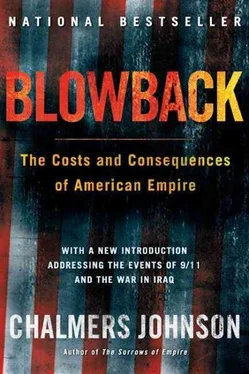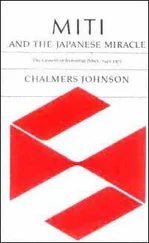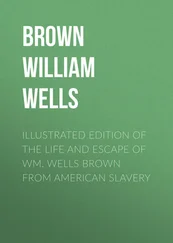Chalmers Johnson - Blowback, Second Edition - The Costs and Consequences of American Empire
Здесь есть возможность читать онлайн «Chalmers Johnson - Blowback, Second Edition - The Costs and Consequences of American Empire» весь текст электронной книги совершенно бесплатно (целиком полную версию без сокращений). В некоторых случаях можно слушать аудио, скачать через торрент в формате fb2 и присутствует краткое содержание. Год выпуска: 0101, ISBN: 0101, Издательство: Macmillan, Жанр: Старинная литература, на английском языке. Описание произведения, (предисловие) а так же отзывы посетителей доступны на портале библиотеки ЛибКат.
- Название:Blowback, Second Edition: The Costs and Consequences of American Empire
- Автор:
- Издательство:Macmillan
- Жанр:
- Год:0101
- ISBN:9780805075595
- Рейтинг книги:5 / 5. Голосов: 1
-
Избранное:Добавить в избранное
- Отзывы:
-
Ваша оценка:
- 100
- 1
- 2
- 3
- 4
- 5
Blowback, Second Edition: The Costs and Consequences of American Empire: краткое содержание, описание и аннотация
Предлагаем к чтению аннотацию, описание, краткое содержание или предисловие (зависит от того, что написал сам автор книги «Blowback, Second Edition: The Costs and Consequences of American Empire»). Если вы не нашли необходимую информацию о книге — напишите в комментариях, мы постараемся отыскать её.
Blowback, Second Edition: The Costs and Consequences of American Empire — читать онлайн бесплатно полную книгу (весь текст) целиком
Ниже представлен текст книги, разбитый по страницам. Система сохранения места последней прочитанной страницы, позволяет с удобством читать онлайн бесплатно книгу «Blowback, Second Edition: The Costs and Consequences of American Empire», без необходимости каждый раз заново искать на чём Вы остановились. Поставьте закладку, и сможете в любой момент перейти на страницу, на которой закончили чтение.
Интервал:
Закладка:
On May 23 Gleysteen met with the acting prime minister and told him that “firm anti-riot measures were necessary.” He agreed to release “CFC [Combined Forces Command] forces to Korean command for use in Kwangju.” General Wickham withdrew the Korean 20th Division from its duties on the DMZ and turned it over to the martial law authorities. General Chun broadcast news of the American decision to release the troops throughout South Korea, thus cleverly bolstering the view that the United States backed Chun. At 3:00 A.M. on the morning of May 27 the 20th Division entered Kwangju, killing anyone who did not lay down his or her weapons. This was a highly disciplined unit, and the city was quickly secured, much as Budapest had been in 1956.
The endgame of the Kwangju uprising dragged on for another two years. In the summer of 1982, two special forces brigades were moved from the border with North Korea to the cities of Kwangju and Chongju in order to hunt down rebels who had fled into the hills when the 20th Division entered the city. The U.S. Defense Intelligence Agency has acknowledged that these remnants were not Communist-inspired but were reacting against the brutality of their own country’s army.
Back in Seoul, General Chun arrested dissident leader Kim Dae-jung on trumped-up charges of favoring North Korea—Kim had spoken of a federal system for the future of a unified Korea—and on May 22 charged him with instigating the protests in Kwangju even though he was in jail when they occurred. The martial law authority sentenced him to death. Richard Allen, Ronald Reagan’s first national security adviser, takes credit for saving Kim’s life. He claims that he traded a presidential invitation to Chun Doo-hwan to visit the White House—in February 1981 Chun was the first head of state to be received by the new president—in return for a life sentence. (Allen actually ended the article in which he described this achievement with the sentence “Chalk up one for the Gipper!”) 16In 1982 Chun allowed Kim Dae-jung to go into exile in the United States.
On May 24, 1980, Chun took care of some old business and had Kim Jae-kyu, Park’s assassin, hanged, since dead men tell no tales. He then put together an “electoral college” under the authority of the Yushin constitution and had himself elected president of the republic. By August 1980, the Carter administration was more than satisfied that Chun Doo-hwan would serve nicely as the leader of one of America’s oldest satellites.
It is hard to calculate how many people were actually killed at Kwangju. There was no United Nations investigation as there was into the Hungarian uprising. The United States has remained even more closemouthed about what happened there than the Chinese Communists are about the 1989 massacre in and around Tiananmen Square. There were only a few Western eyewitnesses. Jurgen Hinzpeter, a German television reporter, reached the city on May 20 and photographed bodies being loaded onto trucks, terrified citizens being led away by troops at gunpoint, and burning buildings. His films circulated underground in South Korea for years among student and Christian groups.
Norman Thorpe of the Asian Wall Street Journal was so appalled by what he saw at Kwangju that he retired from being a journalist in East Asia. In 1996, he protested Richard Holbrooke’s nomination for a Nobel Peace Prize stemming from his work in Bosnia. “Mr. Holbrooke argues that stability was important,” writes Thorpe about Holbrooke’s role in Korea, “because of the North Korean threat. Nonetheless, under the U.S. policies he helped develop, the military prolonged its rule in South Korea, delaying the transition to democracy and taking the lives of many demonstrators.” 17
Following the attack on the city on May 27, Sam Jameson of the Los Angeles Times rented a car and driver to get to Kwangju. He reported that although there was no way to confirm a death toll, at least 200 armed insurgents were said to have made a final stand in the provincial headquarters building. He counted 61 caskets on the floor of a gymnasium across the street from provincial headquarters, victims from the early days of the protest who had been identified by relatives. Photographs placed on the coffins showed the faces of mostly young men, but there was also a middle-aged woman and a child identified as seven years old. The South Korean government later settled on a figure of at least 240 killed; Kwangju sources claim more than 3,000 killed or injured.
General Chun ruled South Korea as president from 1980 to 1988 and then was succeeded by his co-conspirator General Roh, who held office until 1993. Finally, under the subsequent civilian presidency of Kim Young-sam, prosecutors developed bribery and corruption cases against both generals. They produced evidence that while in office the two had shaken down the chaebol (the large conglomerates that dominate the Korean economy) to the tune of $1.2 billion for Chun and $630 million for Roh. In December 1995, in one of the clearest signs of South Korea’s maturing democracy, the government arrested both generals and charged them with accepting bribes. President Kim then made the decision to indict them as well for the military mutiny of December 1979 and for the massacre of hundreds of pro-democracy demonstrators at Kwangju in May 1980. The South Korean state charged that their purpose at Kwangju had simply been to consolidate their own power, which they had acquired illegally.
In August 1996, a South Korean court found both Chun and Roh guilty of sedition. Chun was sentenced to death and Roh to twenty-two and a half years in prison. In December, an appellate court reduced the sentences to life for Chun and seventeen years for Roh, and in April 1997, the South Korean Supreme Court unexpectedly upheld both sentences. Only in December 1997, after Kim Dae-jung (himself sentenced to death by Chun) had been elected president did outgoing president Kim Young-sam pardon both Chun and Roh, with the new president’s consent.
When asked about the 1996 convictions of Chun and Roh, a spokesman for the U.S. State Department, Nicholas Burns, replied, “This [the Kwangju massacre] is an obvious tragedy for the individuals involved and an internal matter for the people of the Republic of Korea.” 18No one in the U.S. government seemed to remember that the events in Kwangju deeply implicated them and that Messrs. Gleysteen, Wickham, Holbrooke, Christopher, and others might well have belonged in the dock alongside their Korean colleagues.
In 1989, when the Korean National Assembly sought to investigate Kwangju on its own, the Bush administration refused to allow Ambassador Gleysteen or General Wickham to testify; and the interagency task force assembled to review Shorrock’s requests for documents under the Freedom of Information Act specifically refused to release any of General Wickham’s communications with his Korean counterparts or with the U.S. government, even though he was the official closest to the Korean military. The New York Times never once mentioned the results of Shorrock’s FOIA suit, and most Americans remain in the dark about what happened at Kwangju or the American role in it. They know much more about the Chinese government’s violent clearing of protesters from Beijing’s Tiananmen Square in 1989 than they do about their own government’s cover-up of the costs of military rule in South Korea. Blowback from these American policies is one of the most volatile ingredients in South Korean politics today.
NORTH KOREA:
ENDGAME OF THE COLD WAR
North Korea long claimed a greater legitimacy in the struggle against Japanese colonialism than South Korea, a claim that many students in South Korean universities and historians of the Korean War accept. Moreover, until at least 1975, North Korea was considerably richer than South Korea in terms of per capita gross domestic product, a situation that slowly changed with South Korea’s extraordinary economic achievements.
Читать дальшеИнтервал:
Закладка:
Похожие книги на «Blowback, Second Edition: The Costs and Consequences of American Empire»
Представляем Вашему вниманию похожие книги на «Blowback, Second Edition: The Costs and Consequences of American Empire» списком для выбора. Мы отобрали схожую по названию и смыслу литературу в надежде предоставить читателям больше вариантов отыскать новые, интересные, ещё непрочитанные произведения.
Обсуждение, отзывы о книге «Blowback, Second Edition: The Costs and Consequences of American Empire» и просто собственные мнения читателей. Оставьте ваши комментарии, напишите, что Вы думаете о произведении, его смысле или главных героях. Укажите что конкретно понравилось, а что нет, и почему Вы так считаете.










